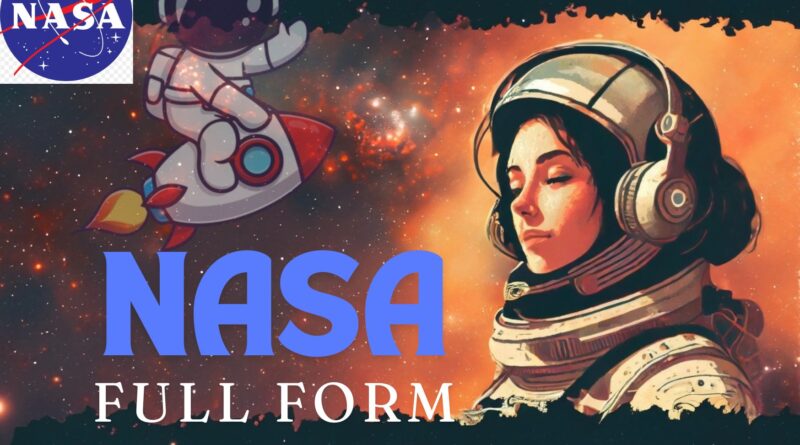NASA Full Form: A Journey Beyond Earth
Introduction: NASA Full Form
NASA Full Form: The National Aeronautics and Space Administration (NASA) is a cornerstone of the United States’ scientific and exploratory endeavors. Established in 1958, NASA has been at the forefront of remarkable achievements, including the historic moon landings, extensive space exploration missions, and significant advancements in aeronautics. This article delves into NASA’s history, mission, and ongoing projects, highlighting its pivotal role in expanding our understanding of the universe.
NASA Full Form: What is NASA?
Founded in 1958, NASA (NASA Full Form) was created by the United States Congress to oversee and manage the country’s manned space program. Officially established in October of that year, NASA’s first mission was the launch of Explorer 1 on January 31, 1958. This mission marked the beginning of the Space Race between the United States and the Soviet Union. In 1969, the two superpowers signed an agreement to collaborate on the International Space Station (ISS), which remains the largest human-made object in orbit and a critical platform for ongoing space research.
NASA’s Mission, Aeronautics, and Space Science
NASA, as the national space agency, leads the way in aeronautics research and space exploration. Its mission, as outlined by federal law, is to explore the solar system and beyond. To fulfill this mission, NASA conducts ground-based research, operates major space centers, manages space missions, and collaborates with international partners and educational institutions. NASA Full Form
NASA’s primary objectives include: NASA Full Form
- Exploring Space: Pushing the boundaries of human knowledge by exploring our solar system and beyond.
- Understanding Earth: Conducting research to better understand our planet’s climate and environmental systems.
- Protecting Life on Earth: Using space-based technology to safeguard human life and improve life on Earth.
- With an annual federal budget of approximately $4.5 billion, NASA focuses on three core areas: space science, planetary science, and aeronautics. These areas are essential for the future of space exploration and scientific research.
NASA’s Goals and Objectives
NASA’s current mission and goals are designed to advance scientific and human knowledge, promote aeronautical and space science technology, and contribute to national security. The agency aims to develop cost-effective and reliable space transportation capabilities to enable human expansion across the solar system. By maintaining its leadership in international space cooperation, NASA ensures that the United States remains at the forefront of space exploration and research. NASA Full Form
Current Projects of NASA
Spitzer Space Telescope
One of NASA’s significant projects is the Spitzer Space Telescope, an infrared space observatory operated by NASA’s Jet Propulsion Laboratory (JPL). Launched in August 2003 aboard Space Shuttle Discovery, Spitzer was designed to study the properties and behavior of warm objects in the infrared spectrum. This observatory has provided invaluable data on the infrared radiation from these objects, enhancing our understanding of the universe. NASA Full Form
The International Space Station (ISS)
The ISS is a cornerstone of NASA’s research efforts. As the largest human-made object in orbit, it has been continuously inhabited and utilized as a test platform for various scientific experiments for over two decades. The ISS represents a collaboration between NASA and international space agencies, fostering global cooperation in space research. NASA Full Form
Mars Exploration
NASA (NASA Full Form) has made significant strides in exploring Mars, with missions like the Curiosity and Perseverance rovers providing detailed analyses of the Martian surface. These missions aim to uncover the planet’s history, geology, and potential for past life, paving the way for future human exploration.
Artemis Program
The Artemis program is NASA’s ambitious plan to return humans to the moon and establish a sustainable presence by the end of this decade. This program will not only advance lunar exploration but also serve as a stepping stone for future missions to Mars.
Conclusion
NASA (NASA Full Form), the National Aeronautics and Space Administration, has been a pioneer in space exploration and aeronautics research since its inception in 1958. With achievements ranging from moon landings to Mars exploration, NASA continues to push the boundaries of human knowledge and technological innovation. By fostering international cooperation and focusing on critical scientific goals, NASA ensures that the United States remains a leader in space exploration. For those interested in exploring NASA’s extensive programs and contributions, the agency’s online portal offers a wealth of information and resources.
FAQs about NASA Full Form
What does NASA stand for?
NASA stands for the National Aeronautics and Space Administration, the United States government agency responsible for the nation’s civilian space program and aeronautics research.
When was NASA established?
NASA was established in 1958, with its first mission being the launch of Explorer 1 on January 31, 1958.
What is NASA’s mission?
NASA’s mission is to explore space, understand Earth, and protect life on our planet. This involves conducting scientific research, developing space exploration technology, and collaborating with international partners.
What are some of NASA’s notable achievements?
Some of NASA’s notable achievements include the Apollo moon landings, the development of the Space Shuttle program, the creation of the International Space Station, and significant advancements in Mars exploration.
How does NASA contribute to climate research?
NASA monitors the Earth’s climate using satellites and conducts ground-based research to understand environmental changes. This research helps improve our knowledge of climate patterns and informs policy decisions.
What is the Artemis program?
The Artemis program is NASA’s initiative to return humans to the moon and establish a sustainable presence there. It aims to pave the way for future missions to Mars and further space exploration.




